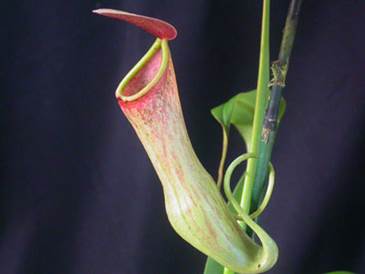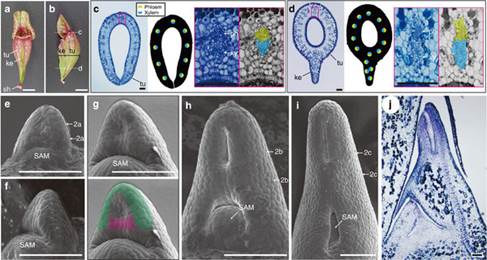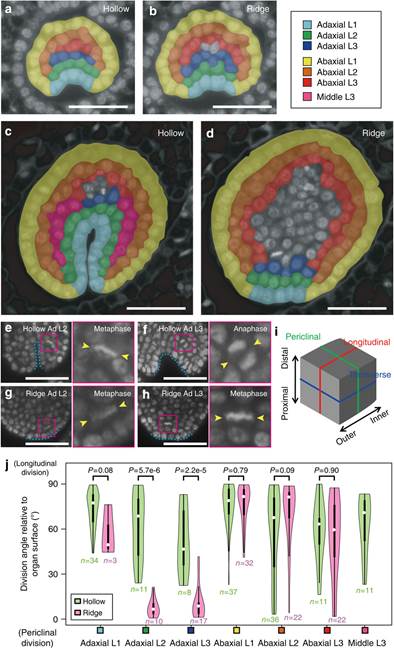



猪笼草是著名的捕虫植物,它们长着管状或壶状的“袋子”用于捕食虫子和吸收营养。不过,这种独特的“袋子”是怎么形成的却一直是个谜。日本研究人员日前说,他们弄清了猪笼草“袋子”形成的机制,这一成果将有助于改造作物和花卉。
猪笼草的“袋子”其实是袋状的叶子,其中储存有消化液。猪笼草把掉到消化液中的小虫子作为营养来源。
日本自然科学研究机构基础生物学研究所与东京大学等机构的研究人员合作,利用扫描电子显微镜观察了一种猪笼草叶片的发育过程。他们发现,造成猪笼草叶片独特形状的主要原因,是叶片细胞分裂的方向不同于植物通常拥有的扁平叶片。
扁平叶片的细胞分裂方向相对于叶片表面来说是垂直的。而猪笼草叶片的尖端和常见的扁平叶片的细胞分裂方向相同,但是在叶片根部,中央部分的细胞却是以与叶表平行的方向发生细胞分裂。叶片尖端部分和根部不同的成长方式结合在一起,就形成了袋状叶子。
有关这一成果的论文已刊登在新一期英国科学杂志《自然•通讯》网络版上。
Oriented cell division shapes carnivorous pitcher leaves of Sarracenia purpurea
Abstract Complex morphology is an evolutionary outcome of phenotypic diversification. In some carnivorous plants, the ancestral planar leaf has been modified to form a pitcher shape. However, how leaf development was altered during evolution remains unknown. Here we show that the pitcher leaves of Sarracenia purpurea develop through cell division patterns of adaxial tissues that are distinct from those in bifacial and peltate leaves, subsequent to standard expression of adaxial and abaxial marker genes. Differences in the orientation of cell divisions in the adaxial domain cause bifacial growth in the distal region and adaxial ridge protrusion in the middle region. These different growth patterns establish pitcher morphology. A computer simulation suggests that the cell division plane is critical for the pitcher morphogenesis. Our results imply that tissue-specific changes in the orientation of cell division underlie the development of a morphologically complex leaf.
原文链接:http://www.nature.com/ncomms/2015/150316/ncomms7450/pdf/ncomms7450.pdf



